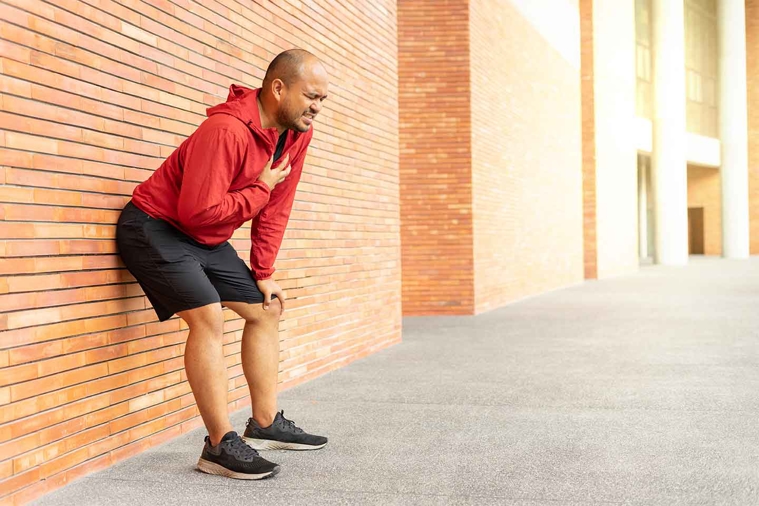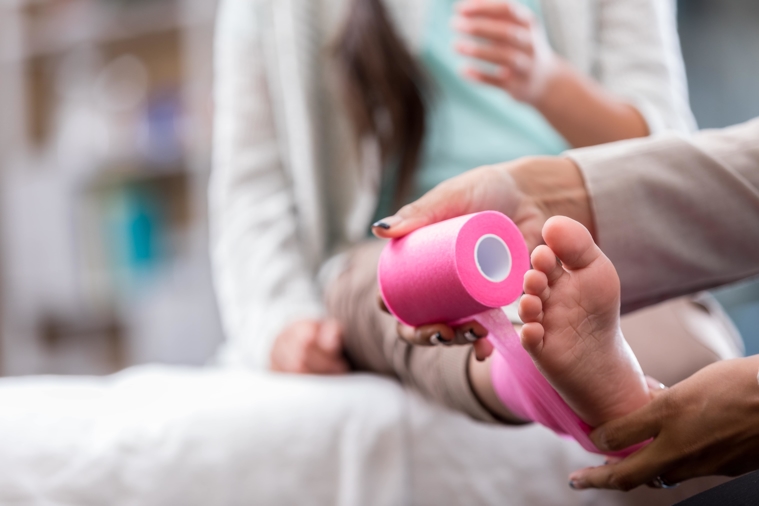Keep your hips shipshape
Feb 9, 2021

As the song goes, the leg bone’s connected to the hip bone. Where those bones come together is in your hip joint, one of the largest joints in your body. This ball-and-socket joint sees a lot of action as you walk, sit, run, bend, carry or jump.
That’s why even small problems with your hip can literally be a big pain. This important joint deserves your attention, even before you experience discomfort. Adventist Health Portland orthopedic surgeon Dr. Elizabeth Lieberman offers some information about what to do to keep your hips in shape.
How hip pain develops
We often think of hip pain as something you deal with as you get older. While age is definitely a factor, you may have risk factors for hip pain at any age as well. Some of the other risks include:
- Injury and malformation:Injuries to your hips or misalignments you may have been born with can cause parts of your hip to become inflamed or damaged.
- Osteoarthritis:This form of arthritis comes from the normal wear and tear of the cartilage in your joints as you age.
- Rheumatoid arthritis:This autoimmune disease causes chronic inflammation and damage to the cartilage in your hip.
- Inflammation:Your hip joint depends on a number of soft tissues that can become inflamed. These include fluid-filled pads called bursa, which help the joint glide well. There are also tendons, muscles and ligaments that support the hips.
Interestingly, hip pain isn’t always caused by a problem with the hip joint. Dr. Lieberman says a pinched nerve in your lower back can cause hip pain. There are muscles, tendons and soft tissues that can be injured or inflamed to the point they cause hip pain — even though they’re not part of the joint.
Similarly, hip joint problems can cause pain outside of the hip area. “Pain from the hip joint often shows up as pain deep in the groin,” Dr. Lieberman explains. “It can also be in the back or side of the hips. Sometimes Patients have pain referred down to the knee.”
When it’s hip to see a doctor
If you have pain that lasts more than a few days or weeks, it’s probably time to see someone. Your provider will help you find answers about the pain and order imaging if needed.
Don’t ignore your hip pain — pain is one of the most common signs of a real problem, Dr. Lieberman says, though not the only symptom. “Some people also have stiffness, catching or giving out of the hip, or they may walk with a limp,” she adds.
Nonsurgical hip treatments
Before you start to worry, rest assured not every hip issue needs surgery. You may benefit from more conservative treatments like:
- Changing your activities.
- Tryingphysical therapy.
- Taking anti-inflammatory medications or steroid injections.
- Improving your diet.
If you’re carrying a few extra pounds or more, losing weight can take a lot of stress off your hips as well as other joints. Weight loss can also make you a better candidate for surgery if you need it, Dr. Lieberman points out.
Signs hip surgery may be next
If more conservative treatments don’t help, you and your doctor may want to talk about ahip replacement surgery. There are three major types:
Total hip replacement:In this surgery, the top of your thigh bone is replaced by a metal or ceramic ball attached to your bone. The socket in your pelvis is replaced by a durable cup. These pieces completely replace the natural joint and smoothly perform the work of your hip, usually with a major improvement in your pain.
Partial hip replacement:During this surgery, only the ball at the top of your thigh bone is replaced. Because it doesn’t fix your entire hip joint, partial hip replacement is typically used to correct certain kinds of fractures.
Hip resurfacing:This surgery replaces just the portions where the hip joints meet. Because of its unique advantages and disadvantages, it’s usually reserved for younger and very active patients.
“The goal of hip replacement surgery is to relieve pain and improve function,” says Dr. Lieberman. “If you are having pain in your hip that is impacting your quality of life or limiting your daily activities, then it is time to discuss treatment options with your doctor.” Your doctor will recommend the right surgery for your condition, health history and goals.
If you’re experiencing hip pain, check in with your primary care provider. If you’ve already been diagnosed with a hip condition, come seeDr. Lieberman or one of the other orthopedic specialistsat Adventist Health Portland. You can reach them by calling (503) 261-6961.
Related articles

Signs and Symptoms of a Heart Attack
September 27, 2022

What kind of care do you need: primary care, urgent care or emergency care?
November 14, 2022

CA Bridge and Adventist Health Implement New Models for Navigating Substance Use Treatment
June 17, 2024